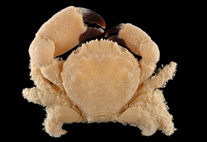Abstract
The monotypic genus Trichobatrachus, with its sole representative, the hairy frog, Trichobatrachus robustus Boulenger, 1900, could be considered one of the most well-known frogs of Africa. Despite its broad recognition and the fact that it is considered wide-spread and locally common (Amiet & Burger 2004), surprisingly little is known about the actual distribution and the specific occurrence patterns of the species. It was originally described by Boulenger (1900) from the Benito River, previously erroneously stated to be located in Gabon. However, Lötters et al. (2001) clarified that the type locality was actually situated in Equatorial Guinea, then part of French Congo, and subsequently provided the first confirmed country record for Gabon. Hairy frogs were previously included in the herpetofaunal lists of Cameroon (Parker 1936; Perret & Mertens 1957), the Democratic Republic of Congo (Laurent 1956), and Nigeria (Schiøtz 1963). More recently published accounts list them for Cameroon (Euskirchen et al. 1999; Herrmann et al. 2005; Gonwouo & Rödel 2008), Equatorial Guinea (De la Riva 1994; Lasso et al. 2002), Gabon (Lötters et al. 2001; Rödel & Pauwels 2003; Burger et al. 2004; Pauwels & Rödel 2007; Bell et al. 2011), and the Democratic Republic of Congo (DRC, Fretey et al. 2011), and speculate about their potential occurrence in Congo and the Cabinda enclave of Angola (Amiet & Burger 2004). The DRC record so far represented the most southerly distribution, while the most northerly account comes from the Adamaoua Province of northern Cameroon (Tadpole voucher MHNG-AMP/ERPI-1035.006 from Bénoué source, Northern cliff Ngaoundéré, Adamaoua, Cameroon/Adamaoua Province, cf. Perret 1966). Specimens stored in the collection at the Royal Museum of Central Africa, Tervuren (RMCA) under collection numbers RMCA B 90060.0004-11 confirm the occurrence of the species in Congo. To our knowledge, these specimens represent yet unpublished first country records.

